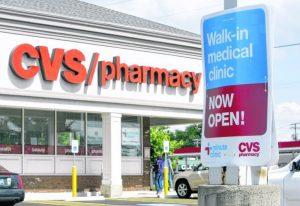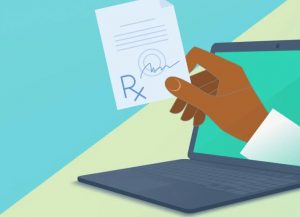
With hindsight people can always point to areas where better or swifter action would have made the difference, but in real-time crisis response, leaders don’t have a script as to what the most effective course of action will be. The Trump administration has been criticized for being slow to protect citizens from the COVID-19 pandemic, but a more insightful analysis reveals that they have actually been dismantling burdensome regulatory barriers, casting more support in favor of the deregulatory agenda they have had since day one.
Let’s consider this by taking a look at instances where the Food and Drug Administration’s (FDA's) regulatory obstacles have hampered the US administration’s response, compared to the deregulation's taken to produce better outcomes.
The health care industry is the most regulated industry in the US economy, virtually everything that is used to treat a COVID-19 patient is regulated by the federal government— tests, masks, gloves, gowns, respirators, ventilators, treatment and drugs.
The first point of criticism when it comes to the FDA concerns delayed development and deployment of COVID-19 test kits.
Late in January 2020, University of Washington flu researcher Helen Y Chu came across the initial case of COVID-19 when testing regular influenza nasal swabs in her investigation monitoring flu outbreaks. She decided this new virus was of enough importance to warrant the time to gather information about it; to determine if and how it was spreading. She sought approval to adapt her Flu Study to include the coronavirus. The Washington federal bureaucracy denied the request since her project was only funded to look into influenza.
Worrying that the new COVID-19 illness might cause a danger to the public, Chu and her team conducted the testing anyway and soon found a string of local cases. University of Washington Virology Lab Director Keith Jerome said the Lab did not need any special federal clearance to develop the new test, but when Secretary of Health and Human Services Alex Azar, declared a public health emergency on January 31st, a new regulatory regime kicked in. If the lab wanted to conduct its own tests, they would now need to secure a document known as an Emergency Use Authorization (E.U.A) from the FDA.
This change in regulations restricted the use of new tests by labs like the one at University of Washington at the moment they were needed most. Former principal deputy commissioner of the FDA, Joshua Sharfstein, who signed off on the first E.U.A in 2009 during the H1N1 epidemic, said the E.U.A process was the FDA's way to prevent any random lab from starting to sell tests in an emergency. He stressed that the FDA needs to check that the tests are effective to protect the public.
Washington University lab director Jerome said that test developer, Alex Greninger, made several calls and sent e-mails to the FDA to figure out what they needed to do to get the E.U.A. “At one point, he was very frustrated because he’d e-mailed them what we were doing so they could review it. But legally you also had to mail a physical copy”. Despite these difficulties, Jerome said, the FDA were responsive to the lab’s requests, and provided “good and substantive feedback that made our testing better, and the response time was typically just a couple of days.” Still, in order to reduce regulatory processes, Trump officials worked with the FDA to drop the requirement to send a CD-ROM or USB drive with a copy of the application, so now applications can be submitted electronically.
State and private labs were also stifled from quickly creating a widespread testing effort by the Center for Disease Control.
The CDC, who had been working closely with the FDA, received the first E.U.A. for a COVID-19 test on the same day as Azar’s declaration. The next day it began sending diagnostic tests to a network of about a hundred state, city, and county public-health laboratories. These tests would allow about fifty thousand patients to be tested, and make testing much faster, since patient specimens would no longer have to be sent to Atlanta Headquarters to be evaluated.
In line with the F.D.A.’s checking procedures, each kit contained test materials known as reagents that each lab had to confirm worked the same way as they had in Atlanta, in a process known as verification.
Of the first batch of kits, around six to eight were able to verify that they worked as intended. About thirty-six of them however, recorded inconclusive results from one of the reagents, with New York City and New York State labs reporting problems with two reagents. As a result, Nancy Messonnier, director of the National Center for Immunization and Respiratory Diseases, said until new reagents could be manufactured, all COVID-19 testing in the United States could only take place at the CDC.
This meant there was a delay of 3 weeks before commercial testing facilities could come onboard to provide widespread testing, with the CDC's faulty test making it impossible for public-health authorities to get an accurate picture of how the disease was spreading.
On March 30th, FDA Commissioner, Stephen Hahn, issued some policy updates to quash bureaucratic delays. He said the FDA recognized the urgent need for even faster testing and “has revised the process to allow labs to begin testing prior to FDA review of their validation data”. This relaxing of the rules on Emergency Use Authorization approval was an unprecedented action to expand access to testing and eliminate the delays associated with the verification process. Importantly, it still allows the FDA to check for accuracy retrospectively. In response, drug companies like Roche, Eli Lilly, Biomerica and others stepped forward with test kits. Highlighting the role of deregulation in allowing private industry and innovation to respond to needs. Worthy to note however, is that Virologists such as Dr Peter Hotez say delays in making tests/reagents for COVID-19 could have resulted from the complicated way the virus interacts with lungs.
Second, the Trump administration has built on earlier efforts at dismantling regulatory burdens to expand telemedicine with consultations via phone, email, Skype or Zoom. Telemedicine has been touted as a convenient means of providing extensive health care access especially as a socially distant way of diagnosing Covid-19. An average smartphone combines computing abilities with communications so data can be transferred from patients to doctors. Indeed, there are apps which can monitor heart conditions, perform ECG’s, scans and the promise of more alternatives to in-hospital care so long as obstructive bureaucratic impediments are dismantled.
Previously, state and federal laws had prevented the practice of telemedicine, but following a meeting between Vice-President Mike Pence and major health insurance companies, the availability of telemedicine has been widely increased. In a March 6th announcement, officials said “Aetna members should use telemedicine as their first line of defense in order to limit potential exposure in physician offices. Cost sharing will be waived for all video visits through the CVS Minute-clinic app, Aetna-covered Teladoc offerings and in-network providers delivering synchronous virtual care (live video-conferencing)”. Similar announcements came from Blue Cross Blue Shield companies around the U.S. saying it will cover telehealth services the same as in-person visits for dates of service starting March 6.

To compliment this, the $8.3 billion package negotiated between Treasury Secretary Mnuchin and leaders of the U.S. House of Representatives included almost $500 million to expand the use of telehealth. Specifically, the "Telehealth Services During Certain Emergency Periods Act of 2020", allows the Secretary of Health and Human Services to waive certain requirements during the coronavirus public health emergency to ensure Medicare beneficiaries can receive the care they need at home without unnecessary potential exposure to COVID-19.
This was a marked change. Previously, Medicare rarely covered this. Under the Federal Social Security Act Medicare could pay for telemedicine only in strict, limited circumstances, such as consulting with, and treating patients remotely only in rural areas, and even there, the patients couldn’t be treated in their own homes. Under one Trump administration rule change the Centers for Medicare and Medicaid Services chief Seema Verma used the President’s executive authority to reclassify these activities as “virtual medicine check-ins” instead of “telemedicine.” By labeling the communications as “virtual check-ins,” Medicare Advantage plans and Accountable Care Organizations could bill Medicare if they consult with patients remotely to determine if they need an in-office visit. Patients can be anywhere, including in their own homes.
Still, the legislation passed by Congress was typical of what Congress produces in imposing restrictions and conditions, so while it allows Medicare to pay for telemedicine in connection with the coronavirus, this was only when the doctor had a relationship with the patient in the previous three years. Obviously, that would pose another barrier to remote medical care, so the Trump administration used its emergency powers to override the restriction.
The Trump administration also cut a bunch of red tape by suspending federal licensing regulations so that doctors who are licensed in any one state can deliver services to patients who reside in some other state. Because this required state-level restrictions to be suspended as well, Texas and Massachusetts have used their emergency powers to put it in place, and other states may follow in course.
Thirdly, the Trump administration made two regulatory changes to widen access to direct primary care. Direct primary care enables patients to talk with a doctor by phone at ANY time - including nights and weekends - and has experienced a huge growth in demand during the spread of COVID-19. It often cost up to $50 per month, per adult, ($10 per child), but following the Trump administration's deregulatory moves, enrolees can now get direct primary care services under Medicare. Employees can also now use health savings accounts to pay the monthly fee for direct primary care. Neither of these were available under Obama.

The COVID-19 pandemic has hammered home how normal businesses can’t produce and sell many items needed for the health care industry without the government’s permission, and getting permission can be a long process. Take a look at the approval requirements and overlapping rules from multiple agencies that are necessary to make N95 masks here. So, when officials noted a shortage of N95 masks, (due to the fact that Obama’s administration was advised to replenish a national stockpile but did not), bureaucratic regulations initially obstructed access to millions of N95 masks, made for other industries.
Under U.S. law, masks for health-care workers are made on production lines certified by the FDA. Masks for industrial and construction workers are approved by the National Institute for Occupational Safety and Health (NIOSH). Working with the Trump administration, new legislation signed on March 18th allows other manufacturers to provide some industrial N95 masks to medical workers without fear of being sued if the masks fail. The government now assumes liability, and it applies to dozens of models of NIOSH-approved N95 masks, including disposable models, until October 2024. This freed producers like 3M and Honeywell to sell tens of millions more masks per month to hospitals.
The emergency of COVID-19 has brought the Trump administration an expanded freedom to cut red tape and regulations that allow labs, patients, doctors, industries and other providers to meet challenges without being restrained by counterproductive regulatory restrictions. This reinforces the point that a smart deregulatory agenda is the most efficient for Americans.
Carol King received a first class BA (honors) in History and Politics from Stirling University, along with an exceptional commendation for a study on US public opinion and Foreign Policy. She also completed a year of study at University of London before taking up a Graduate Proctor Fellowship at Princeton University. She further completed a MPhil in American Politics at Dundee University. Aspiring to be a writer/commentator on American politics, she now writes for UncoverDC.
Twitter: @CarolKing561


